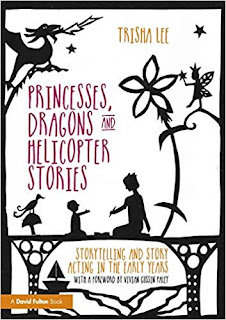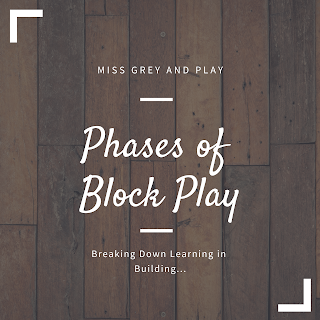Helicopter Stories
It's funny how having two cohorts (AM and PM) really shows you how little 'cultures' develop in each class. It is so hard to create provision that fits both as they are so different. One of my cohorts was struggling with their confidence. It was like a few felt that they were too shy to reply to the register or answer a question and others followed. I didn't want to pressure the children, especially with them being EAL learners so I searched for some ideas. Luckily I came across 'Princesses, Dragons and Helicopter Stories' by Trisha Lee and thought that it was exactly what I was looking for (click the image below for a link to her website).
As I read I condensed the key information into a document to disseminate to staff. I have included this below...
In the initial session some of the children were nervous but that was expected. I introduced it in small groups in the outdoors and this worked really well as the children were less inhibited. They became particularly animated when stories involved monsters and scary characters.
So I followed the guide and started using them for one day a week but as with everything, it changed and evolved for my children and my setting. My morning children were more confident and able to move onto whole class story telling. My afternoon bunch were a little more cautious but the amount of imagination from them was astounding. It really highlighted to me how being the loudest does not make you the most successful (which is why I am unsure assessing against self-confidence and self-awareness!).
As mentioned, I made some compromises to fit it to my school environment. I did write down and say exactly what the children had said but I would respectfully reframe it during the acting. For example, "So the next line is... he runned to the park. Okay so child A has said that he runs to the park, can you show me what that looks like?" In a school with almost 100% EAL pupils modelling language just had to be my priority.
I also introduced a proforma so that it could be added to our learning journey files quickly but also look professional. This has been adapted by the different age groups e.g. adding lines for the reception proforma. I would write the characters and objects in the first box and circle the one the child wants to play. I also get them to draw a character or take a photo of them acting it out for the bottom box.
An additional tip that I picked up from watching videos of an SEN school using helicopter stories is that children who are non-verbal or mine who are in a silent period can use objects or pictures to tell their story. One of my boys held up a train to me when I asked him to tell me a story. When it came to acting he moved his arms in circles and smiled very proudly. His friends all joined in making train noises. It was beautiful!
Despite these changes I have tried to keep the essence of helicopter stories and ensure they are about imagination and building confidence. It has been lovely to watch them come into their own and share their stories. I would highly recommend it!
Have you used them? How did you interpret them in your setting?




Comments
Post a Comment